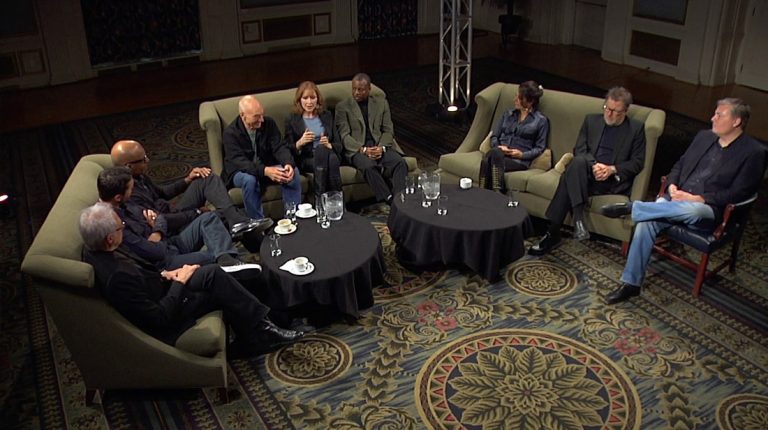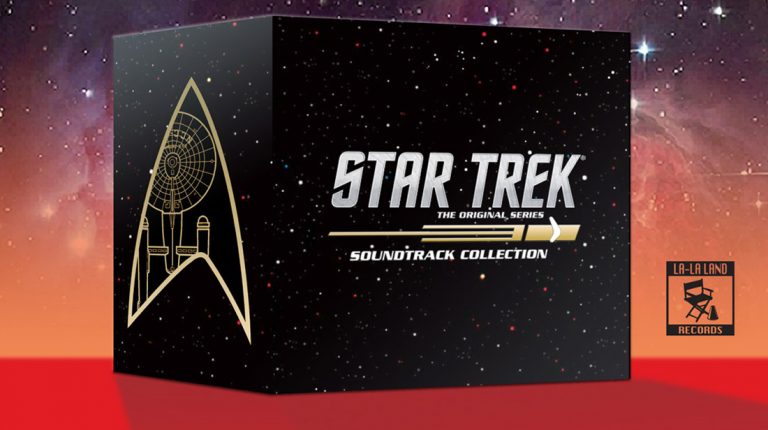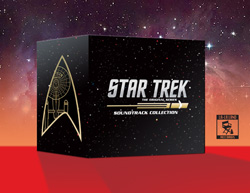 Thought by many (including – it turns out – the people who worked on it) as nothing but a pipedream for so many years, the Star Trek: The Original SeriesComplete Soundtrack Collection from La-La Land is hurtling towards us at warp speed for its official release date next week.
Thought by many (including – it turns out – the people who worked on it) as nothing but a pipedream for so many years, the Star Trek: The Original SeriesComplete Soundtrack Collection from La-La Land is hurtling towards us at warp speed for its official release date next week.
Our preview of the set on November 18 drew a huge response so we’ve lined up some special interviews with the talented producers that worked so hard to bring fans this incredible set.
First up is Producer Neil S. Bulk. We caught up with Neil yesterday for an in-depth chat about the boxset. We’ve also got FIVE new exclusive sample tracks from the set chosen by Neil to complement the five we posted last time. Scroll to the bottom of the interview to listen to them!
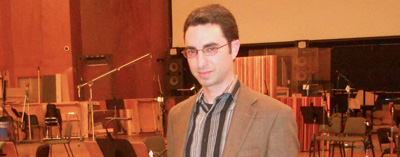
Neil S. Bulk: Star Trek TOS Soundtrack Interview
Interviewed by Adam Walker for TrekCore.com
![]()
TrekCore: Great to talk to you, Neil. Tell us a bit about your responsibilities on the Star Trek: The Original Series Complete Soundtrack project. How were you involved?
Neil Bulk: On Star Trek I was the first person after the engineer to actually get the music, to get to hear the transfers. My job was to cut up the correct takes that were used in the television series – make sure we had the right takes and segues for episodes – make sure the takes were in good condition, the speed was correct and there was no damage. In some cases we had to go to another source, maybe to plug in a hole where there was some damage, but overall it was all in beautiful condition.
I passed along all the material to our engineer in Australia – DropBox got a great work out on this project, I was sending about three gigabytes a day! Each episode was about three gigabytes when you factored in all the music recorded, and on this project – like all projects – I recordedreference audio. Usually I use a DVD, I literally just rip the audio and put it into ProTools just as a reference. It makes it easy to ID takes that way. If you hear some stage noise in the music, you can say “Ah, let me listen to that stage noise… yes, that’s the right take.”
You know this as well as anybody – there have been DVDs and Blu-Rays of Star Trek released over the years with remixes done. We weren’t quite sure if the remixes were 100% accurate. We know of instances where a piece of music was dropped or there were new sound effects. That’s not a knock on the products, that’s just what happens. I thought in the case of Star Trek “let’s do this right, let’s go back to the earliest source possible.” So I convinced them to let me get the laser discs from the 80’s for Star Trek. I thought “What’s the earliest highest quality source that we can use… the laserdiscs!” I knew someone who had them, and I knew someone with a laserdisc player. I literally went ahead, got it all, plugged it in to my ProTools and then for every scored episode – around 33 or 34 – I recorded in real time the laserdisc audio strictly as reference. Right there, 34 hours’ worth of work just recording the audio into ProTools. Once that was done, I had a reference for synch, for pitch, for takes and for segues. That all got passed on to the engineer so he could do his fixes.
That was really my big job, making sure everything was right on this. We had a breakdown of what every cue was in terms of composition and then it became my job to cut them, line them up to the show, make sure it matched and pass them on to the engineer to make sure everything was clear to him. And it was – it worked out very well and we had good communication, his name was Chris Malone and he works in Australia!
TrekCore: Do you remember when you first found out about La-La Land’s plans for theStar Trek TOS music release and how did you react?
Neil Bulk: I was talking to Michael Gerhard from La-La Land and he said “we’re doing Star Trek.” There had been talks of “What’s your dream project?” They would mention Star Trek once in a while, and every time they said it I said “I have to be on that in some capacity!” You know, I know this music pretty well, I’m well versed in my Original Series Trek music. Every once in a while it would come up in a conversation and I just said “If it happens, let me know.”
Fast forward and I was talking to Michael Gerhard one day and he mentioned Star Trek was happening and I couldn’t believe it! Jeff Bond then confirmed it, the only person who didn’t tell me was Lukas Kendall who really spearheaded this project. So, I was having a bad day on another project and Lukas called me saying “Neil, I’ve screwed up and I’ve got an emergency project that needs to be done. Paramount needs the audio assets from some stupid French Western. You have to come immediately and there’s no money in it.” So I said no! I wasn’t driving into Hollywood with LA traffic at that time. So I called a colleague, Mike Matessino who’s done a lot of great Trek work and was going into Hollywood already and he said he’d pick it up for me and take a look. But then I didn’t hear from him and all of a sudden it clicked “Oh, Lukas hasn’t told me about Star Trek yet, that’s what this French western is!” When I finally did get the material, it was a happy ending, there was no French Western, but throughout the project all sorts of stuff that we shared amongst each other was dropped into the “French Western” folder on DropBox so Star Trek did ultimately become a French Western!
TrekCore: What’s your favorite new discovery from this set, Neil? What should fans listen out for?
Neil Bulk: Oh brother! My favorite new discovery is how awesome Gerald Fried’s Season 2 scores are. We heard all sorts of stuff that we’d never heard before. For me, “Catspaw” and “Friday’s Child” on Season 2, Disc 1 – Gerald Fried was the sound of Season 2 for Star Trek. Season 1 was a little more serious and Season 3 was a little dour, but Season 2 was always these fun-filled romp episodes – you know, “Mirror, Mirror” and “Amok Time”. That was my biggest discovery, just admiring this fantastic music, and I listen to it all the time.
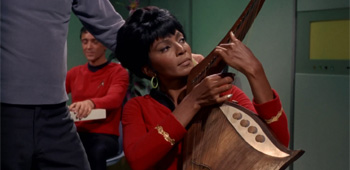 Some of the most anticipated music is in the form of original voice recordings such as the famous song “Beyond Antares” sung by Nichelle Nichols in “The Conscience of the King“
Some of the most anticipated music is in the form of original voice recordings such as the famous song “Beyond Antares” sung by Nichelle Nichols in “The Conscience of the King“
TrekCore: The set also features original vocal recordings from Nichelle Nichols and Charles Napier. Tell us about those.
Neil Bulk: What was really cool with Nichelle’s “Beyond Antares” from “The Conscience of the King” is that it was cut down in the episode. We have the full song on the set, on three tracks – harp, voice and a blank channel. We have it all, and when I was lining it up I was shocked!
TrekCore: So that touches on my next question – did you find any surprises that you didn’t expect?
Neil Bulk: The big bombshell was that not only was “City on the Edge of Forever” recorded in Stereo, but Fred Steiner composed music that was never used in Star Trek. Not only have we got the best episode with the best sound, he wrote stuff you’ve never heard! He wrote this whole piece of music where Captain Kirk steals the clothes, but I’m guessing the scene was recut or changed because it doesn’t match properly. There were so many instances where music was dropped from an episode.
TrekCore: In the trailer for the release we see you thumbing through pages full of track names and cue numbers from the original show. Tell us a few of the strangest and funniest names you came across.
Neil Bulk: The most politically incorrect one will not be in our set! We changed the name. There was a cue written for “The Conscience of the King” which was in the blooper reel called “Five Sex and a Half”! It’s when Lenore first beams aboard the Enterprise. And that cue lines up right with the episode. I don’t know why they dropped it, part of the art of film-scoring is knowing when to use and not use music. Lukas [Kendall] can probably tell you more, but those sheets of paper were actually the original cue sheets which were mainly made up for legal purposes. They’re a breakdown of what piece of music is used where by composer and publisher so people get paid correctly. Going through them, we discovered they were riddled with typographical errors. When Sulu freaks out on the Enterprise in “The Naked Time” it was called “Solo Finks Out”! Lukas went through the original manuscripts which CBS had, so when you see the cue titles those are the original composers’ titles.
TrekCore: It’s a miracle those sheets survived all these years!
Neil Bulk: The tapes weren’t even supposed to survive; they were supposed to be destroyed after every year. But thank goodness they weren’t!
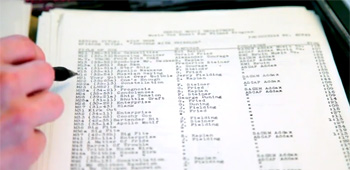 Neil had the original manuscripts detailing all the cue titles, composers and publishers for the entire Star Trek back-catalogue at his disposal for the project.
Neil had the original manuscripts detailing all the cue titles, composers and publishers for the entire Star Trek back-catalogue at his disposal for the project.
TrekCore: When La-La Land first announced this set, fans went absolutely crazy at the news! As a fan, how long did it take you to calm down after you found out?
Neil Bulk: I think last week! You know – you’re a Star Trek fan – and you have this stuff imprinted on your brain. I always used to think “Wouldn’t it be great if someday somebody released a complete collection of this stuff?” And with the library music! That’s what really puts this set over the top. Star Trek would record previous cues from a previous season to use over again in the new season. The opening of “Mirror, Mirror” is a library cue from “Mudd’s Women”! And so I always wanted to hear the Season 3 version of a Season 1 cue just because I think that’s cool – they didn’t have an electric violin in Season 3 for “The Man Trap” cues, they had a female vocalist.
TrekCore: One of the more popular follow-up questions we’ve had from fans is whether there’s a chance we could see the complete Animated Series music as a companion piece to complement this set. Is there a chance it could happen?
Neil Bulk: It would be nice, and I would love to be a part of it. The story is that that is lost. But, I’ve been doing this type of work for a while and sometimes things that are lost suddenly aren’t lost. I have no knowledge, I know nothing about an Animated Series project happening – but I’d love it, it’s very cool music.
TrekCore: We understand La-La Land are releasing a Deep Space Nine soundtrack collection in January. Are you involved with that set?
Neil Bulk: I think they’re targeting January, but don’t quote me on that. I listened to it, but just for quality control – I wasn’t involved in the project. I’m not a Niner, but I think it’s a “Best Of” compilation. It’s a 4-Disc set, and I think they went through and cherry-picked from all the seasons. I think it’s more based on the Next Generation set that La-La Land put out previously.
TrekCore: Yes! The TNG set was tantalizingly titled “Volume 1”. Was there ever a temptation to release the Original Series set in volumes as well?
Neil Bulk: I think there will be a TNG Volume 2 at some point. For the Original Series, I think the deal precluded ever doing it as season sets. I’m totally convinced by having the complete set – it tends to become anticlimactic with a show like the Original Series. Getting it all in one big collection is sort of sugar overload, but trust me on this – it’s really awesome and you’re going to be really thrilled getting it all at once!
TrekCore: If you can sum up this set for all our readers, what would you say?
Neil Bulk: To me it’s a very happy ending to a wonderful dream. As a fan of Star Trek and film music, I always wanted everything from Star Trek. It was always a pipe dream of this glorious boxset that no-one would ever release! To be a part of it is fantastic, but the best part of it is when other people get it and you start reading the messages. You know, I was at a James Bond screening recently and a friend-of-a-friend who I’d never met before said “You know, I haven’t bought the James Bond blu-ray set yet – I’m saving up for the Star Trek music set!” He had no idea who I was or that I was involved, and then we were introduced. It’s fantastic being able to share it with fans – we all have this common bond of loving this music, and here it is in fantastic quality. It’s a tremendous boxset with tonnes of info in it, we even have quotes from the composers. It’s as thorough a set as anyone could hope for in terms of Star Trek. I don’t like to use the word ‘definitive’, but I don’t see this set being topped for Original Series music! It is the last word on Star Trek Original Series music.
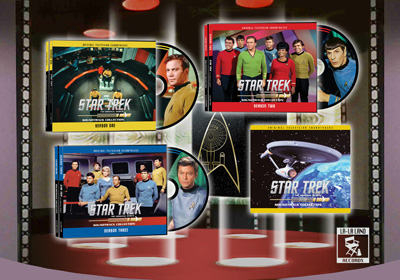 The set is broken down into the three separate seasons of Star Trek: The Original Series.
The set is broken down into the three separate seasons of Star Trek: The Original Series.
Each season gets its own special disc casing.
The 15-CD boxset will contain all episode scores as heard in all three original seasons of Star Trek. This special collection has been newly remastered from studio elements and features hours of material previously unreleased in any format. The set is limited to 6,000 units and will be available exclusively from www.lalalandrecords.com at 1pm (PST). The retail price will be $224.98.
To complement our interview with Neil Bulk, TrekCore is able to bring you some more exclusive sample tracks from the release for your listening pleasure! You can stream the tracks directly or save them to your computer by right clicking on the links.
Situation Grave (from “Where No Man Has Gone Before“, Alexander Courage)
The Rock Slide / Beam Up (from “The Enemy Within“, Sol Kaplan)
Ship in Orbit (library cue, Alexander Courage)
Distress Signal (from “Friday’s Child“, Gerald Fried)
Aberrated Captain (from “The Enterprise Incident“, Alexander Courage)
Stay tuned to TrekCore for more exciting news and coverage on the Star Trek: The Original Series Complete Soundtrack Collection. Be sure to guarantee your order by ordering from www.lalalandrecords.com at 1pm (PST) on December 4th 2012.


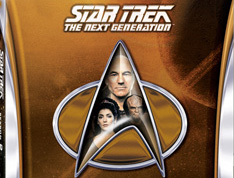
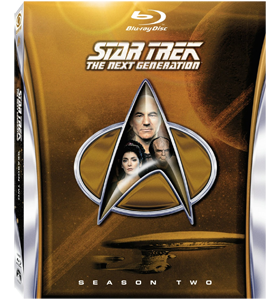 Star Trek: The Next Generation Season 2
Star Trek: The Next Generation Season 2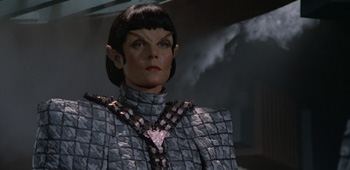
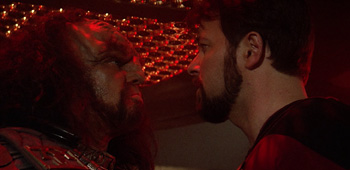
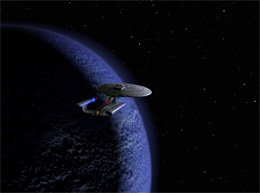

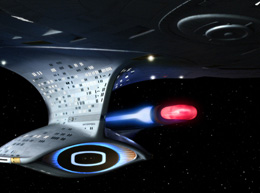

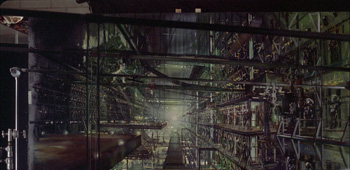
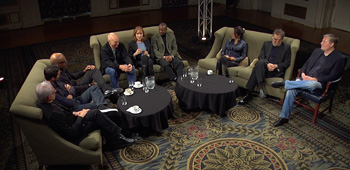
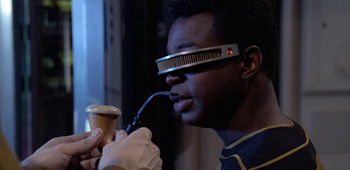

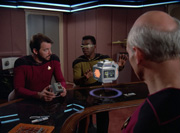
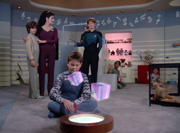
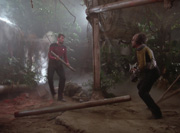
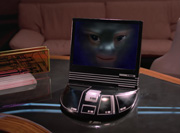
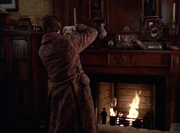
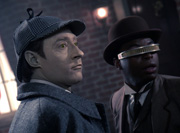

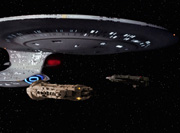
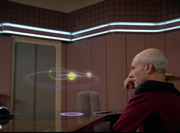
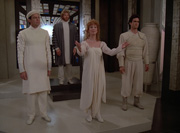
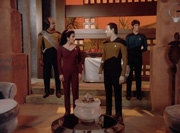
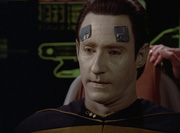
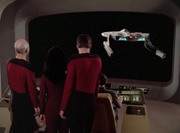

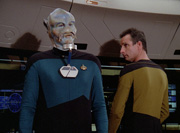
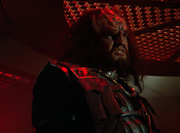

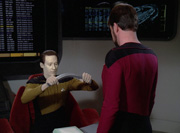
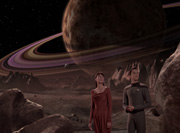
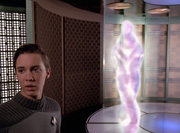


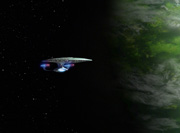
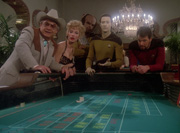
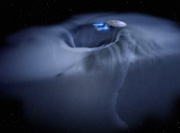
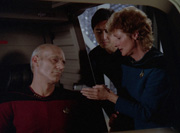
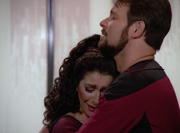

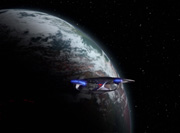
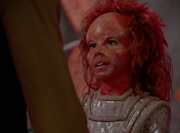
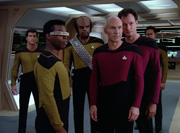
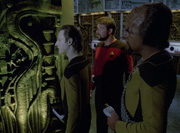

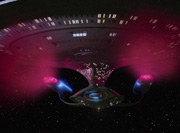

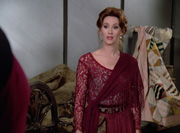

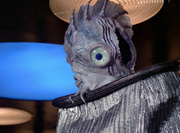
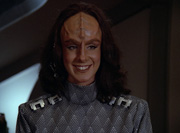
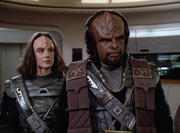
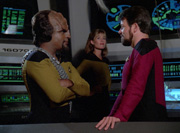
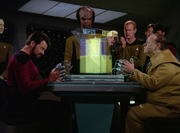
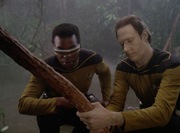
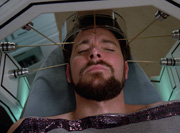


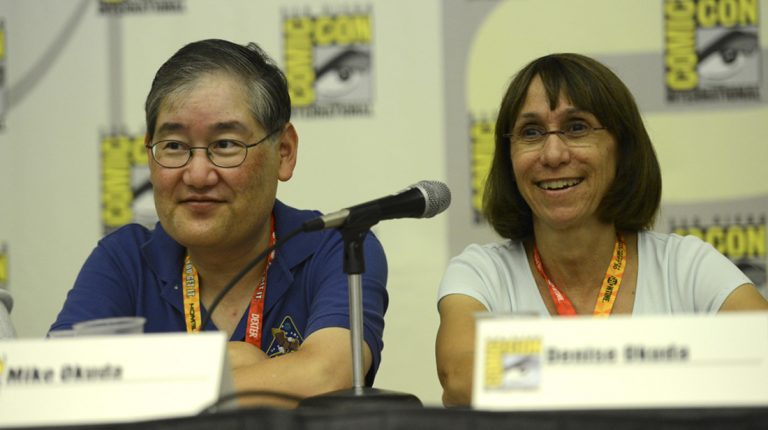
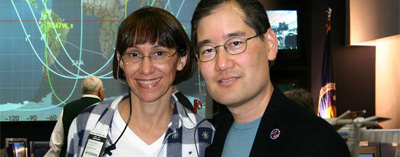
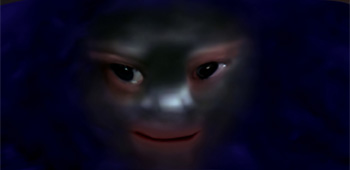
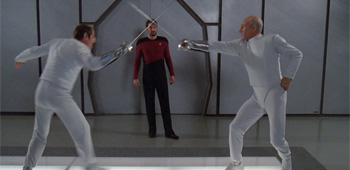

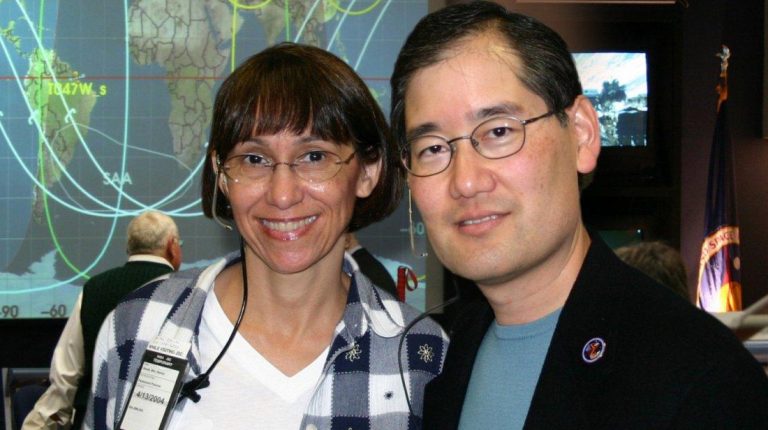
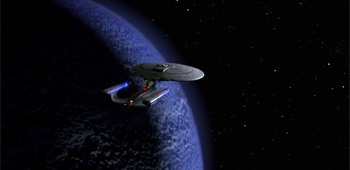
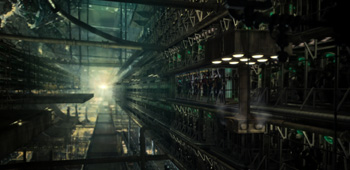
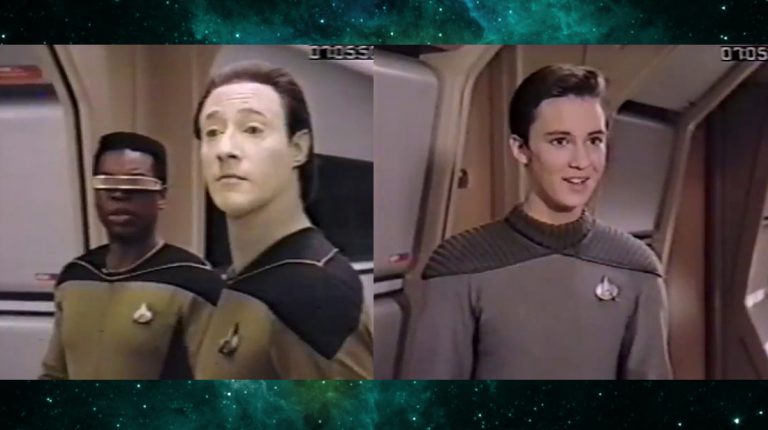
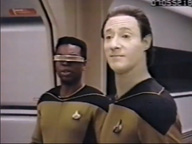 With all of the talk of deleted scenes being focused on the stunningly remastered and expanded ‘
With all of the talk of deleted scenes being focused on the stunningly remastered and expanded ‘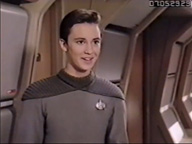 While it’s fun to see Data fall for Wesley’s excuse to get out of dealing with Worf, we can understand why it was cut from the episode. It makes Wesley look like a jerk for so blatantly taking advantage of Data’s naiveté, and it leaves Geordi looking like a wimp for completely undercutting his previous order for the teenager to lead the way in handling Worf (and for letting Wesley get away with it wearing such a smug grin on his face).
While it’s fun to see Data fall for Wesley’s excuse to get out of dealing with Worf, we can understand why it was cut from the episode. It makes Wesley look like a jerk for so blatantly taking advantage of Data’s naiveté, and it leaves Geordi looking like a wimp for completely undercutting his previous order for the teenager to lead the way in handling Worf (and for letting Wesley get away with it wearing such a smug grin on his face).
 we pushed it to 150 so it would make it sort of logical. The book itself actually covers 250 years of history because we start before the Federation is founded… a good 100 years before the Federation, so we probably should have settled with “The First 250 Years”, but it’s not… I mean, the Federation is only 150 years old in the book.
we pushed it to 150 so it would make it sort of logical. The book itself actually covers 250 years of history because we start before the Federation is founded… a good 100 years before the Federation, so we probably should have settled with “The First 250 Years”, but it’s not… I mean, the Federation is only 150 years old in the book.


